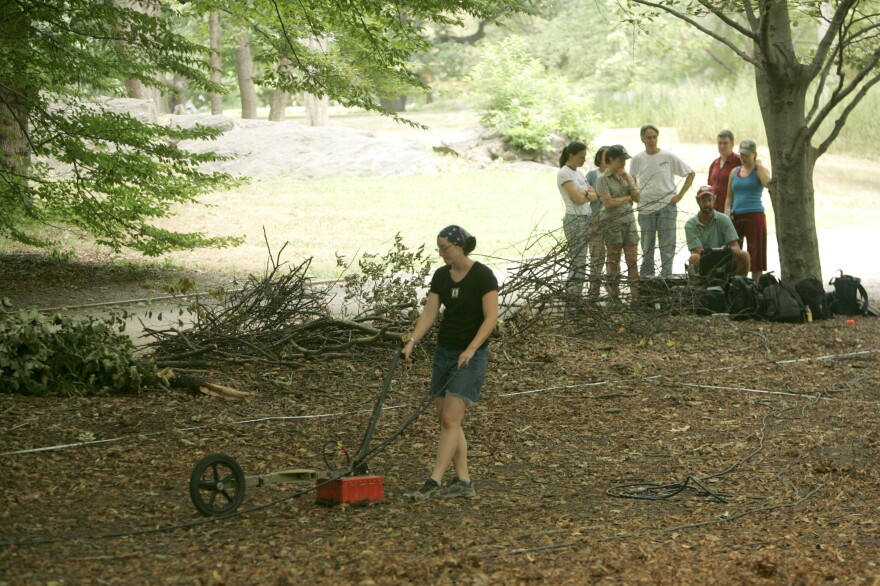Editor's Note: This report contains a racial slur.
A new play reveals some little-known history about the land that became New York City's Central Park: People used to live there.
Beginning in 1825, about 300 people — mainly free African-Americans — lived in a village that spanned a portion of the park's 843 acres in Manhattan, between 82nd and 89th streets, east of Central Park West. It was called Seneca Village.
Cynthia Copeland, one of the lead researchers of the site with the Institute for the Exploration of Seneca Village History, says its residents, which also included Irish and German immigrants, were targeted in newspapers with insults, including racial slurs.
"They literally called them tramps, squatters, thieves, lowlifes. They referred to Seneca Village as 'Nigger Village,' " she says.

The New York Times once described them, along with the animals living on the land, as "stubborn 'insects.' "
Copeland says it was part of a smear campaign to help justify destroying people's homes and cemeteries, using eminent domain to make way for what would become the most visited city park in the country.
The village was leveled in 1857, the same year construction began on Central Park. But there's still evidence of Seneca Village under the park's west side. In 2011, guided by old maps, title deeds and census records and with the city's permission, Copeland and some archaeologists carefully excavated areas where the buildings of Seneca Village once stood. They uncovered shards of porcelain, a small leather shoe and a stone foundation.
"There were churches here. There were schools here. There were two- and three-story framed houses. That's why this is an incredible story," she says. "This is a story of early landownership by African-Americans."

Copeland helped push for a historical sign now standing near a playground and drinking fountain in Central Park. It commemorates the village as the first-known community of African-American property owners in Manhattan.
Now, actors at Premiere Stages at New Jersey's Kean University, located just outside New York City, are retelling the story of Seneca Village in a new play called The People Before the Park, set to premiere Friday night. It takes place a few years after New York state lawmakers approved taking over the private property in 1853.
Keith Josef Adkins, who wrote the play, says that Seneca Village was an important refuge for many black residents from the racism of 19th century life in New York.
"It meant that they would be free to go about life the way they wanted. Wake up. Do whatever they want. Go to sleep. You know, just to have a simple, peaceful life," Adkins says.
He created fictional characters based on his research on the community. The play's main character, Stephen Van Cleef, is a 42-year-old oysterman and a sixth-generation New Yorker. He lives with his son, Jonas, in a one-story house with a porch.
Van Cleef's wife has gone missing. He's worried she'll never find them again if they leave Seneca Village, and he vows to stay. Later, in the play's last scene, he is confronted outside his home by a police officer with a billy club.
Actor Billy Eugene Jones, who plays the role of Stephen Van Cleef, says audiences can assume his character does eventually leave because, after all — spoiler alert — Central Park is there.
"So there is no kind of waiting mystery like, 'Hmm, I wonder if they're going to build a park?' " Jones says.
Still, the play offers moments of tension between neighbors, lovers, parents and their children. Jones says it's a chance to meet people whose stories have been forgotten.
"Somehow, somebody found a piece of paper. Somehow, somebody found patterns of stone in Central Park, and they said, 'Oh, wow! What was this?' And then people started to have these people live again," he says.
This time the lost village of Central Park will live again onstage.
Copyright 2021 NPR. To see more, visit https://www.npr.org.



